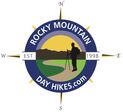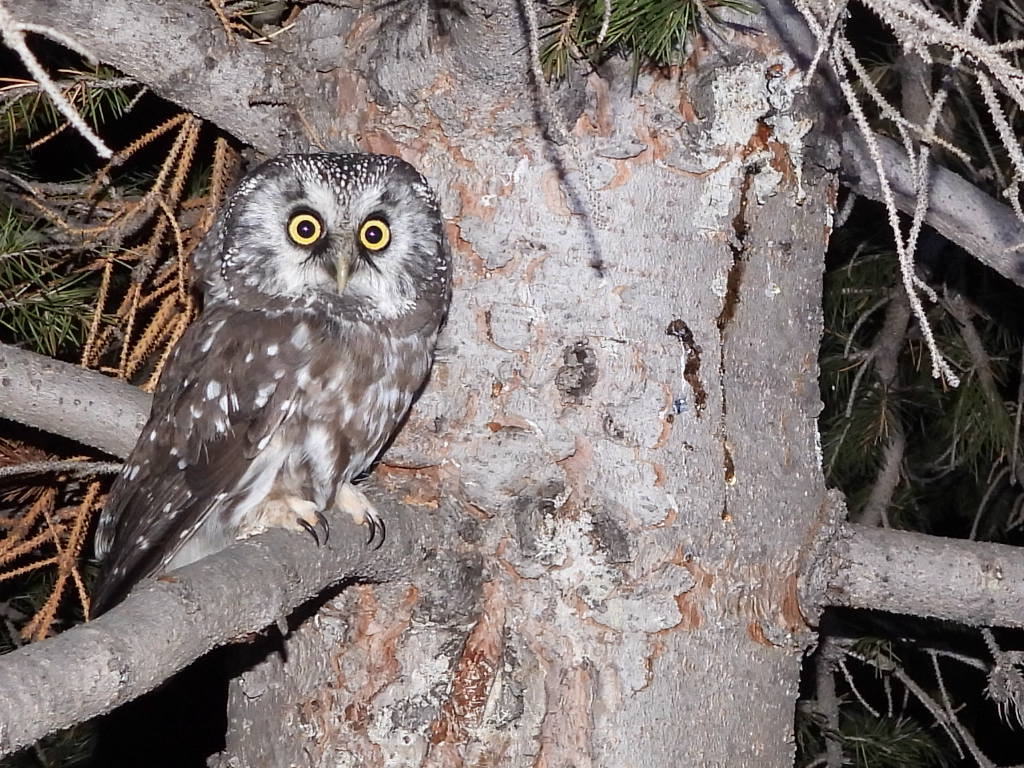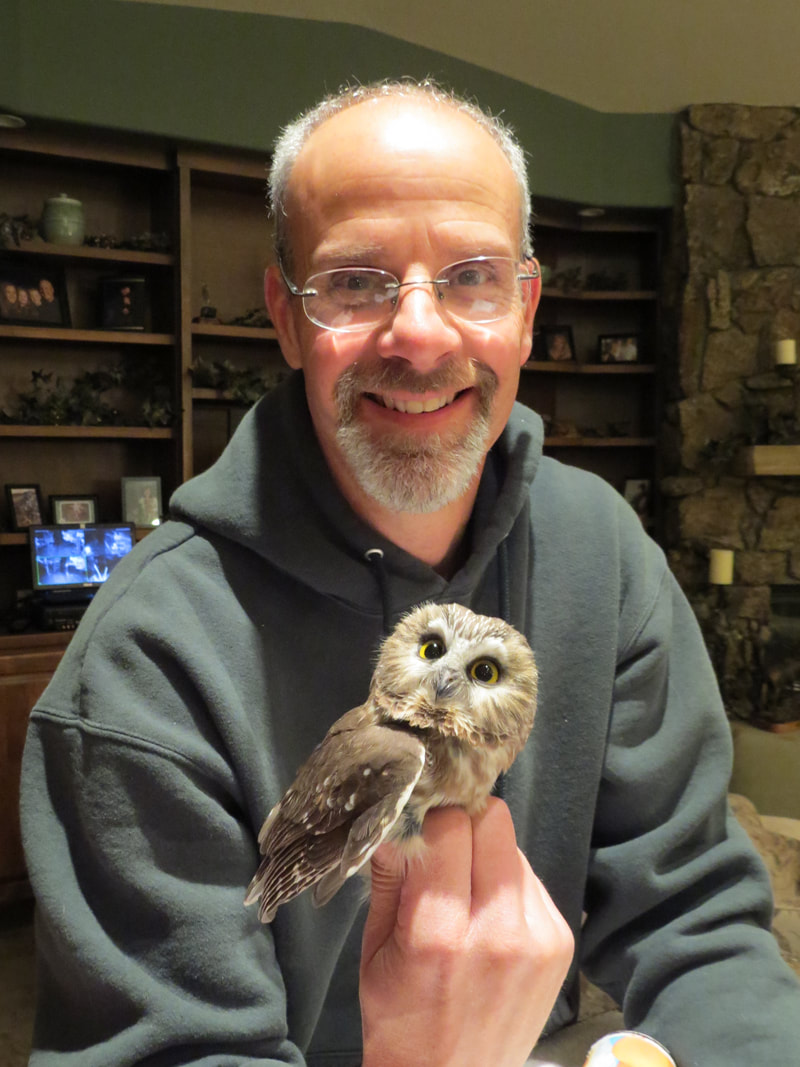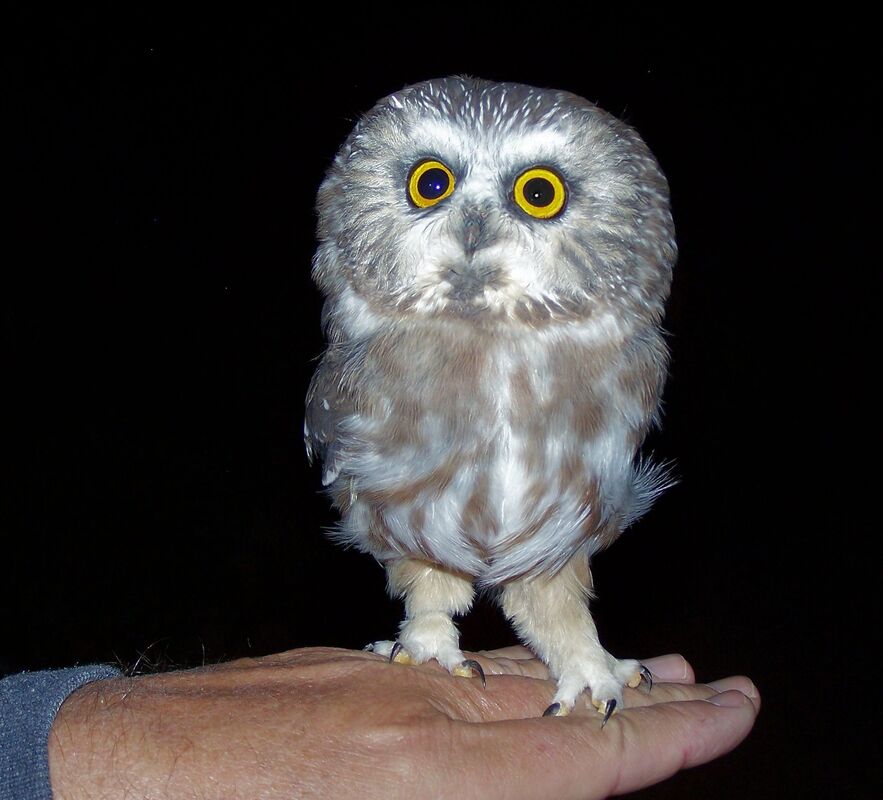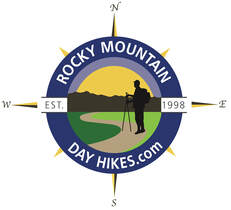|
Notes from the
Trail |
|
By Scott Rashid Colorado Avian research and Rehabilitation Institute (CARRI). Since 2007 the Colorado Avian Research and Rehabilitation Institute has been studying the fall movements of both Boreal and Northern Saw-whet Owls in Northern Colorado. This is accomplished by capturing birds in the fall. After they are captured, we check their condition by measuring and weighing them, then a numbered leg band is placed on each owl to identify individuals, before releasing them. Birds are captured in 3, 40-foot (12 meter) nets. Each net has four pockets that stretch the length of the net. The nets are placed in the woods in a “U” shape. After dark, the call of the owl we are intending to capture is broadcasted. As the owls are moving to what will eventually be their wintering grounds, in the fall, they come towards the call, fly around the speakers and land in one of the nets and are captured. To reduce excess stress to the owls, we place video cameras on each of the nets so we can monitor the nets in real time. The signal from the cameras is sent via WIFI to a computer that is inside a nearby building allowing us to monitor the nets. This way, as soon as the owls land in one of the nets we can rush to the nets and extract them, place them in a cloth bag and bring them into the building to be processed. Processing the owls consists of determining the age and sex of each bird, placing a numbered leg band on them, measuring their wings and tails, weighing each bird, and determining their age before releasing them. The information that we obtain from the owls is sent to the bird banding laboratory in Laurel Layland via computer. If any one finds a banded bird, they simply contact the banding laboratory using their website www.usgs.gov/labs/bird-banding-laboratory, fill out the information, and the lab will let them know who originally banded the bird and were it was banded. The banding laboratory will then send you a certificate of appreciation. They will also let the person that banded the bird know that the bird was obtained. The calls of the birds are broadcast using a cell phone and Bluetooth speakers. The cameras are powered using a portable power station. The battery lasts about eight hours, enabling us to work well into the night to research the owls. There are multiple banding stations all over the country capturing these owls. We are one of the few in the country that use cameras to monitor the nets. We have found that having cameras on the nets reduces stress on the bird immensely, eliminates predation of the owls when they are in the nets, and enables us to run off any large animals like bears, elk, and deer that come near the nets. These large creatures can destroy the nets by walking through them. As we have been operating our banding station for many years, people from around the country come to see the owls. Some of these individuals are fellow researchers that want to see how our operation compares to theirs. As few banding stations use cameras and want to see how well they work for the project. This season, we have several wonderful volunteers that will be assisting us with the research. Some have never seen this type of research before, but are excited to learn the process, and a few have assisted us for years and have their assigned jobs. This is an amazing operation to see, as it is a good way to see the owls up close in and learn about their natural history. Since we began capturing owls in the fall, we have banded more than 400 birds. The surprising thing about this is we have only had three owls either recaptured or found dead. One bird banded in Pinewood Springs was recaptured in Estes Park a year later. Another bird captured in Estes Park, was recaptured live and released in Eastern Pennsylvania, and another bird was recaptured in the same banding site that it was originally banded. This research is important to see how many of these owls are in the area and what the health of the birds are, which also tells us of the health of the forests where the bird reside.
0 Comments
Leave a Reply. |
"The wild requires that we learn the terrain, nod to all the plants and animals and birds, ford the streams and cross the ridges, and tell a good story when we get back home." ~ Gary Snyder
Categories
All
“Hiking -I don’t like either the word or the thing. People ought to saunter in the mountains - not hike! Do you know the origin of the word ‘saunter?’ It’s a beautiful word. Away back in the Middle Ages people used to go on pilgrimages to the Holy Land, and when people in the villages through which they passed asked where they were going, they would reply, A la sainte terre,’ ‘To the Holy Land.’ And so they became known as sainte-terre-ers or saunterers. Now these mountains are our Holy Land, and we ought to saunter through them reverently, not ‘hike’ through them.” ~ John Muir |
© Copyright 2025 Barefoot Publications, All Rights Reserved
